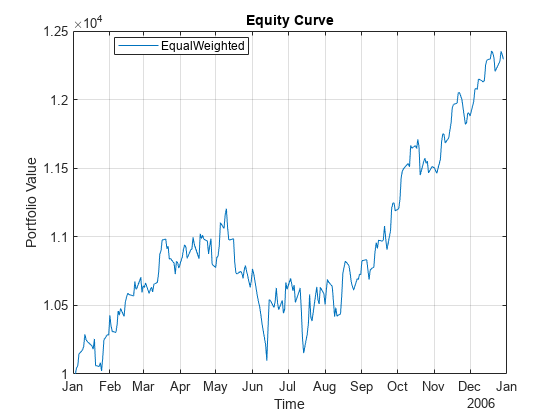equityCurve
Description
equityCurve( plots the equity
curves of each strategy that you create using backtester)backtestStrategy. After creating
the backtesting engine using backtestEngine and running the
backtest with runBacktest, use
equityCurve to plot the strategies and compare their
performance.
h = equityCurve(ax,backtester)h for the equity curve
plot.
Examples
Input Arguments
Output Arguments
Version History
Introduced in R2021a
